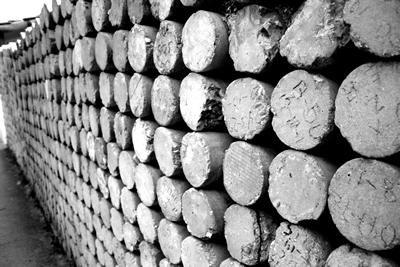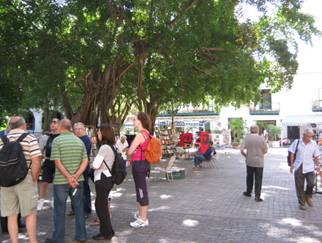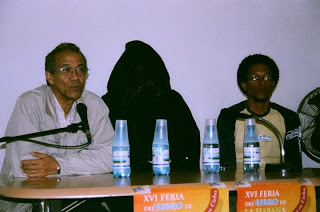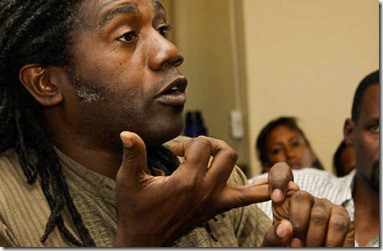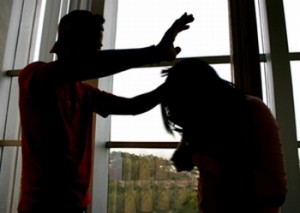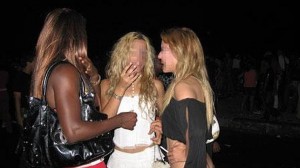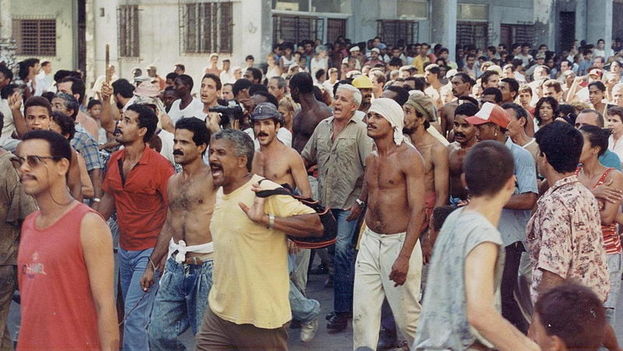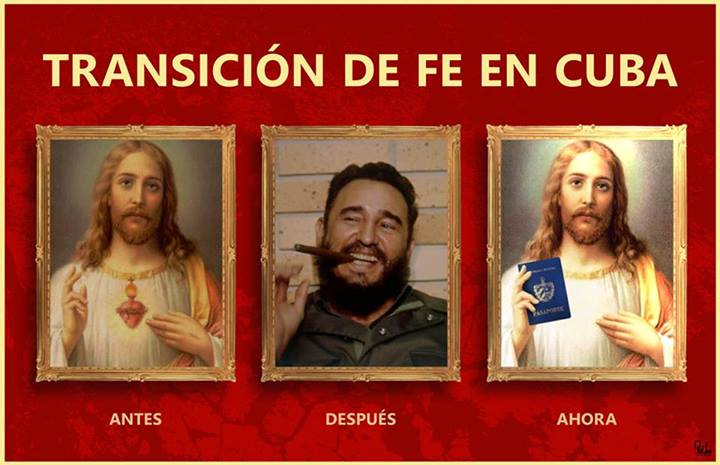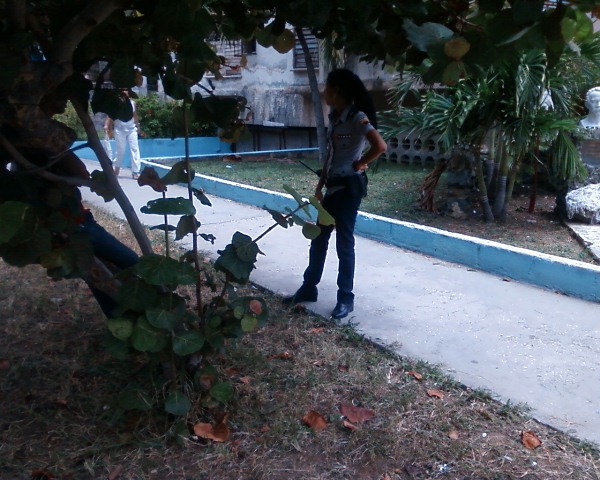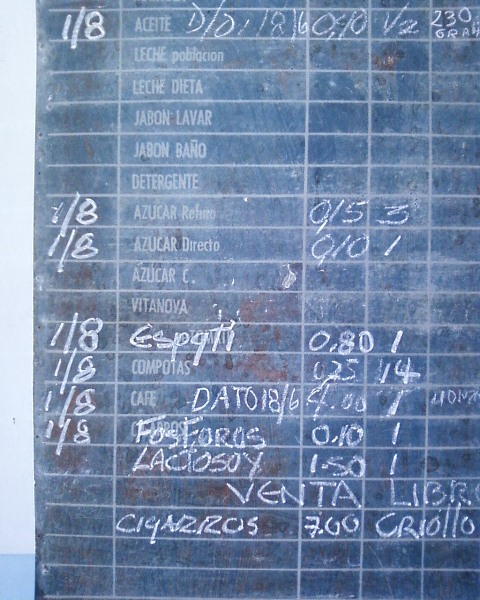This past March 23, the prize-winning essayist, critic and literary investigator Roberto Zurbano, who up until this moment functioned as the director of the Editorial Fund of Casa de las Americas, was dismissed from the position. This measure was taken a few days after the US newspaper “The New York Times,” published an article under the headline “For Blacks in Cuba the Revolution Hasn’t Begun.” In an interview given to The Associated Press, in which he clarified that the headline he gave his article was “For Blacks in Cuba, the Revolution Hasn’t Ended,” Zurbano reaffirmed his essential ideas on the subject when he stated that, “on racism there is still much to discuss.”
Rather than driving an objective reflection on the subject, the aforementioned article unfortunately provoked a bit of throat-slashing on the part of some Cuban intellectuals who did not share his opinions.
As it is, the ensuing controversy tested Zurbano’s proposal about the survival of racism in Cuba. As this thesis coincided with opinions that I have shown in various works on racial discrimination in Cuba, I took advantage of the opportunity to return to the vital point of social relations in Cuba and their effect on the life and social development of the dark-skinned population in Cuba and consequently on all Cubans.
The essential point is that throughout our history racism was not treated in the comprehensive way that such a complex phenomenon requires. This failure is one of the causes for its endurance and continuation throughout the 20th century, in spite of half a century of revolutionary power. To augment this claim, I will briefly list in the form of a thesis a group of key facts, aspects and moments related to this social phenomenon. continue reading
The concept of race as a group of hereditary characteristics is certainly without foundation. As a social construct it has a damaging effect on human dignity. In Cuba, it stems from a complex phenomenon intertwined with our economic, sociological and cultural history which is replicated over time.
From a sociological point of view the nation is the fusion of the principal social factors which make up a country, resulting from a long process of gradual cohesion as well as social, cultural, and economic integration that gradually moves, in time and at a given moment, towards unity across differences.
Black Africans appeared on the Cuban scene in the beginning of the 16th century, but it was towards the end of the 18th century that their massive entrance transformed the ethnic composition of the population, the geography, the history, the culture and the social structure of the country.
Not being the owners of their own bodies and subjected to inhumane living conditions, blacks responded by rebelling. They became runaways, formed apalencamientos* and staged uprisings. Through these rebellions blacks almost single-handedly wrote a chapter of our national history.
Faced with total inequality with respect to whites, blacks became creole, but in a different way from white creoles, which, to paraphrase Jorge Manach, precluded their a sharing common goal on top of the distinguishing features.
During the 10 Years’ War, begun in 1868, land-owning whites aspired to economic and political liberty while blacks aspired to the abolition of slavery. The simultaneous existence of these goals — independence and abolition — constituted the starting point for the formation of a national consciousness in a context where inequality and racial discrimination acted in opposing directions. This war, though it ended without fully achieving its objective, dealt a blow to the institution of slavery by liberating slaves who had participated in battle during the war and legally endorsed some liberties (contained in the Zanjon Convention), which gave birth to Cuban civil society.
In the interim between the 10 Years’ War and the start of the War of 1895, Juan Gualberto Gomez — supported by the colonial resolutions that limited exclusion from service due to race — introduced various principles similar to those that Martin Luther King would use six decades later in the civil rights struggle of American blacks and founded the Directorio Central de Sociedades de Color. From his position as a social activist he mobilized thousands of blacks to resistance. Facing arduous incidents while adhering to the law, he won access to spaces and facilities such as balcony and orchestra seats in theaters as well as to public classrooms, which until then had been limited to white children.
At the re-initiation of the war of independence, when slavery had already been abolished, blacks were newly incorporated, this time with an agenda of social equality. As before, due to their expertise in the use of machetes and living in the jungle, equality and solidarity between black and white fighters overcame racial prejudice.
With the coming of the Republic, where these skills were useless, a sociological program aimed at reducing the economic and cultural gap between whites and blacks was lacking. That lack was reflected in public office, in commerce, banks, insurance agencies, communications, transportation, tobacco stores and even the armed forces, which replaced the Liberation Army was made up mostly of whites, in a country where the 60% of the fighters for independence had been black.
The persistence of inequalities and the constant frustrations in the early republican years led to the founding of the Independent Party of Color in 1908 and the armed uprising of its members in May 1912. This last action ended with the most horrible crime committed in our history, because in addition to the thousands of blacks who were killed, killing happened between white-skinned Cubans against black-skinned Cubans, once again hindering the unfinished process of a common identity and destiny.
In the 1930s, various press organs, radio stations and leading figures in Cuban politics and culture engaged in a public debate against racism, thereby aiding the integration and social and cultural development of blacks, and as a result, strengthening the awareness of a common destiny. One of the results was the inclusion, in the 1940 Constitution, of a legal principle essential to the promotion of equality between blacks and whites, that stated, “all discrimination on the basis of race, color or class or any other cause harmful to human dignity is illegal.” However, this principle was left incomplete in the never enacted criminal law against discrimination.
In 1959, the Democratic and Popular Revolution dealt the most serious blow to Cuban racism throughout its history. However, with the dismantling of the existing civil society, in addition to its benefits also lost were the civic instruments and spaces that had contributed to the progress made so far. The mistake was to believe that racial discrimination existed as a result of social classes, so that once these were eliminated, they proceeded to announce its end in Cuba. Such a significant “achievement” led to the decision to remove the subject from public debate. Thus, racism, expelled by law, took refuge in people’s minds, waiting for better times.
The equality of rights among blacks and whites proclaimed by law had a weak spot: inequality that had been inherited and left unresolved. In other words the starting point, seemingly the same for both blacks and whites, put the former at a serious disadvantage. This explains why universities that had been primarily black and mulatto re-acquired their previous racial profile over time. Why was this? Among the reasons were that black families, with rare exceptions, could not give their descendents’ studies the importance they required given their own backgrounds. (I remember my father, the grandson of a slave, telling my mother, “Leave him be! He will study when he is big.”) In other words the familial support so necessary to success was missing, which facilitated a return to the former status quo.
Even during the very real crisis Cuban socialism experienced in 1989, blacks did not emigrate for well-known historical reasons and missed out on the much-anticipated cash remittances from relatives overseas. Evidence of this can be seen in the re-appearance of social inequities, in the high proportion of blacks in prison, in their significant presence during the mass exodus of 1994, in their concentration in poor, marginalized neighborhoods and subsequently in the re-emergence of discrimination.
In short, throughout our history racism was not treated in the comprehensive way that such a complex phenomenon requires. In colonial times there was no interest in solving the problems of the black man. The issue was recognized during the republican era, which allowed for the right of association and political debate, addressed it in the constitution and achieved certain advances. These, however, were not accompanied by corresponding institutional measures.
The consequences of racism are reproduced and continue to be present in our society, where the decision to increase the proportion of blacks and people of mixed race en some bodies, as has happened in the National Assembly of People’s Power, gives evidence that the problem is still present. The most recent proof is exactly the controversy around the black intellectual Roberto Zurbano.
In this polemic there are two distinguishing aspects: one, whether racism is present in Cuba or no; the other, the treatment of the subject given by Zurbano’s critics.
Regarding the former, exactly related to the theories presented, I will only refer to the two basic questions posed by Zurbano:
The economic difference created two contrasting realities that persist today. The first is that of the white Cubans, who have mobilized their resources to enter into a new economy driven by the market and to reap the benefits of a kind of socialism that is supposedly more open. The other is the plurality of the blacks, which is witness to the death of utopian socialism.
This statement confirms the similarity between the situation between the blacks higher up in the Republic, lacking economic means and instruction, and the lack of positioning today, to participate under conditions of equality when faced with the measures of economic liberty that are being dictated. One fact that reveals the reproduction of the causes, one of the sources of Cuban’s participation are foreign shipments, before which blacks are at a total disadvantage. Therefore, dark-skinned Cubans continue to be unequal from the start.
Racism has been hidden and has been reinforced in Cuba in part because it is not talked about. The Government has not permitted racial prejudices to be debated or confronted either politically or culturally. Instead, they frequently pretend that it doesn’t exist.
Here lies another key to the continuation of racism. They suspended debate on the subject and now, 54 years later, it’s not only uncomfortable to accept it, but a few of the intellectuals who have attacked Zurbano even go so far as to deny its existence.
Regarding the second aspect, referring to the treatment given the subject by Zurbano’s critics, what jumps out is an additional difficulty in the eradication of racial discrimination in Cuba: the absence of cultural dialogue and debate that has essentially nullified the social sciences.
In Cuba it’s not possible to have a basic, objective dialogue without transgressing the limits imposed by the dominant ideology. This is a sufficient obstacle to destroy the effectiveness of debate over solutions to social problems. In this sense the statement of Guillermo Rodriguez Rivera: The Cuban revolution not only began the struggle against racism and discrimination but nor can one can say that this struggle had never been so deep as in this moment of our history, it’s a proposal that completely lacks foundation.
In another part Rodriguez Rivera noted that Zurbano should investigate the subject with his elders. This and other proposals of Zurbano’s critics reveal the limits established by the powers-that-be which comply in part with intellectuality; a behavior which tends to paralyze thought and debate, at the same time classifying within the absurd and worn down categories of friends and enemies those who think differently from what is permitted.
Without failing to recognize the role played by some emerging spaces for debate, the complexity of the subject of race in Cuba makes necessary public debate, where, paraphrasing Victor Fowler, all points of view participate.
Racial discrimination is and continues to be a serious obstacle towards sharing a common destiny among all Cubans. For all of these reasons, the controversy provoked by Zurbano’s article should be converted into a road towards reaching a consensus among all possible solutions to the unresolved subject of racial discrimination in Cuba, whose fundamental lines emerge from studies, public debate and consensus.
No one holds the truth in his hands, but we can shape it among all of us. What is clear, as history has shown us, is that eradication does not only depend on the proclamation of laws, which is what has been done since the birth of the Republic until today, but also from a multidisciplinary analysis of its origin, development and treatment, as in necessary projects directed to this goal.
* Apalencados, stable communities of runaway salves, were located in areas difficult for their persecutors to access, such as shantytowns. Made up of a series huts, they were characterized by economic self-sufficiency.
Published in Convivencia
8 July 2013

